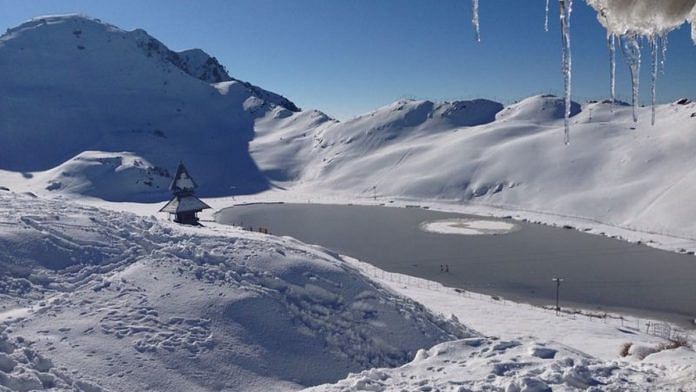Bengaluru: February was unusually cold in northern India this year, with temperatures falling to the lowest in the month in five years.
On Thursday, New Delhi witnessed a minimum temperature of 6.8°C as the month ended. The national capital has averaged about 12°C the past few years towards the end of February.
Even January was the coldest in six years and December the coldest in 50 years.
The temperature anomaly in the second half of January and all of February is attributed to a phenomenon called the polar vortex, now a commonly heard phrase in North America and Europe.
More specifically, it is the breakdown of the protective and necessary polar vortex that causes blasts of cold winds and temperatures to rise in the rest of the world during and after winters. The same phenomenon occurred last year, causing chilly temperatures, and infamously, in 2014, causing record winter lows across the world.
With temperatures hitting a five-year low, ThePrint explains what a polar vortex is and how it breaks down.
Also read: Study shows climate change has a new victim — a type of cloud
What is a polar vortex?
The name polar vortex refers to rings or bands of low pressure winds near the poles, stacked on top of each other, blowing strongest during winter.
The increased temperature difference between the frigid poles and the comparatively warmer continents increases the strength of the vortex, which surrounds the cold air of the arctic.
These winds extend high up into the atmosphere, for nearly 50 km or so. These walls of wind keep the cold winter air locked at poles, preventing it from spreading beyond.
But once in a while, these walls break down and the cold air from the poles escapes down to lower latitudes.
How it breaks down
In January, the polar vortex split into three separate bands. The cold air then escaped and traveled down to North America, Europe and Asia, making the temperatures in these regions drop below normal for February.
This breakdown was predicted by climate modeling, with a report stating that the impending breakdown could be the biggest determining factor for the weather of the northern hemisphere.
As with most climate anomalies today, the frequent breakdown of the polar vortex can be tied to anthropocene, or human-made, global warming.
As Earth warms up, different parts of the planet warm at varying rates. In the Arctic, where the breakdown occurred, the warming rate is twice as high as other places. This has led to the lowest amount of ice in the North Pole in recorded history. Subsequently, sea levels have also risen significantly in the area.
The darker sea absorbs more heat as compared to the slowly melting permafrost. This, in turn, creates a hot spot, which changes how winds blow in our atmosphere. All of this combined is what eventually leads to a breakdown in the polar vortex.
This year, as the vortex broke up, the winds across the Arctic reversed their orientation.
The vortex split into three distinct areas of circulation in the first half of January. Each of these splits allowed more cold air to break through.
As the winds take time to travel, the effects of the breakdown are experienced later. And that’s how February in northern parts of the country turned out to be colder than usual.
Also read: How global media goes wrong on coverage of climate change






